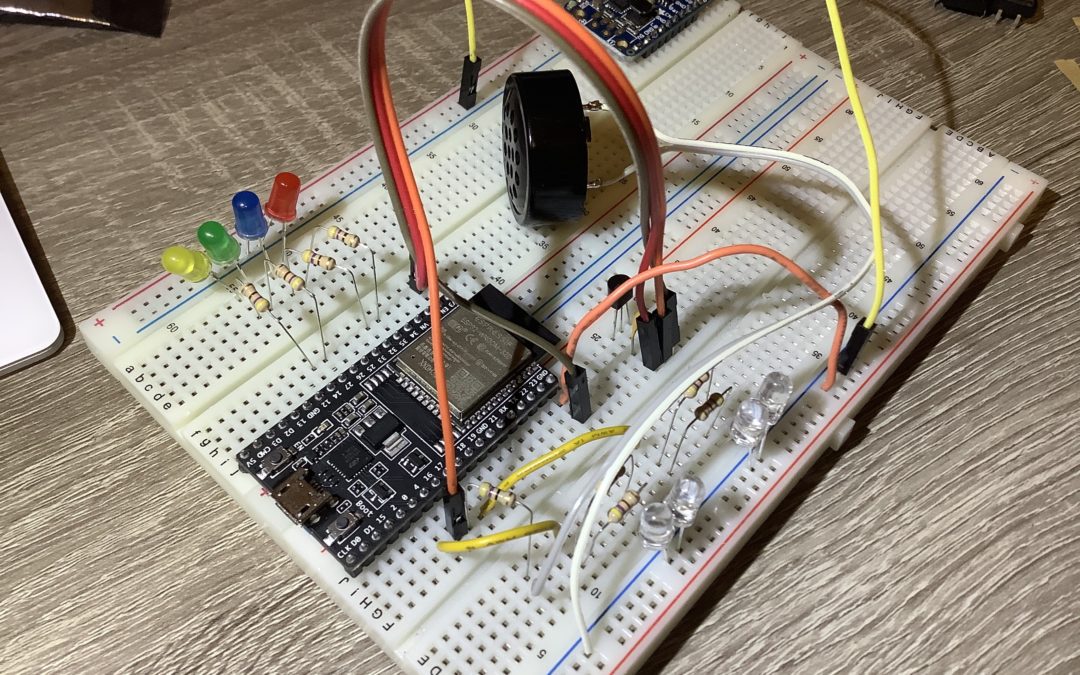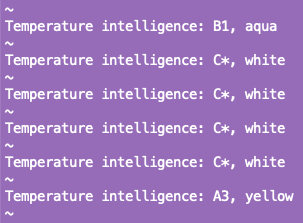
by Erin RobotGrrl | Dec 8, 2020 | News, Tech Logs
Determined the pins and wired them to the ESP32. Checked the recommended schematic for the temperature sensor, added a 0.1uF cap. There will be 4x white LEDs (2 individually controlled), and 1x red, blue, green, yellow. The purpose of each of these will be determined later when writing the code that connects with MQTT. The white LEDs illuminate an orange Nalgene quite nicely. Found a tone library for the speaker that works with the ESP32. Why use a breadboard for this and not jump right away to circuit board layout? Have run in to situations with the ESP32 where some pins behave differently than originally thought (for example, some pins are output only). Just verifying this works, then can make a pcb. Next step is to write the test code, then schematic capture and board layout. Yay, electronics!

by Erin RobotGrrl | Nov 26, 2020 | News, Tech Logs
First step of integration between software (AR) and hardware is complete. Now, instead of the device simulator program, there’s an actual device. Using a microcontroller with Wifi connectivity for preliminary testing. The device connects to MQTT, sends sensor data (randomized for now), and subscribes to the relevant topics. For testing in the field, the device will connect to an access point (aka hotspot) from a phone to send the data. Future versions will use a microcontroller with cellular connectivity in the field. The next steps for software are to write a python program that logs all messages on the MQTT broker to a csv file. The next steps for hardware are to find some sensors I have around and add some LEDs, a speaker, and make a board with it. Integration with the map will also need to be completed at some point in the future.

